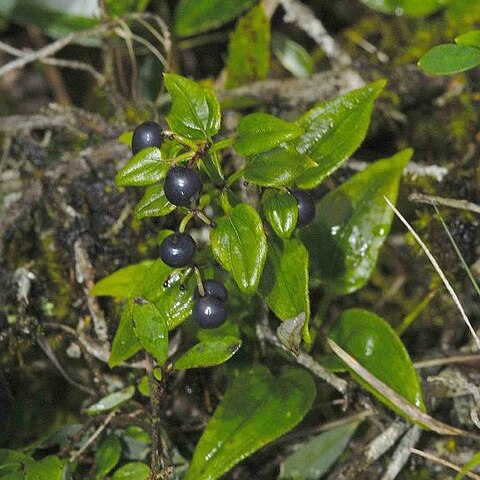Vines, herbaceous, perennial (rarely erect in mountains of Taiwan: Rubia akane var. erecta); stems probably to 2 m or more, quadrangular to narrowly 4-winged especially when older, glabrous to pilosulous, retrorsely aculeolate sometimes becoming smooth with age. Leaves nearly exclusively in whorls of 4, equal or sometimes unequal; petiole 0.5-5 cm; blade when drying often blackening, ± thickly papery, suborbicular-cordiform, broadly ovate-cordiform, or oblong-suborbicular, (1-)2-4.5(-5) × (1-)1.5-3.5(-4) cm, length/breadth index 1-1.8, glabrous or sparsely to densely pilosulous or hirtellous, scaberulous, base cordate to cordulate, margins sparsely to densely retrorsely aculeolate, apex cuspidate to apiculate; principal veins palmate, 5 or 7, veins usually ± impressed and tertiary venation visible. Inflorescences thyrsoid, paniculate, with terminal and axillary, many-flowered cymes, axes aculeolate, glabrous to pilosulous; bracts lanceolate or lanceolate-elliptic, 1-4 mm; pedicels rather stout, 1-2.5 mm. Ovary ca. 0.8 mm, smooth. Corolla yellowish-greenish to white, rotate to bell-shaped, glabrescent, fused base 0.5-0.7 mm; lobes lanceolate, 1.3-1.4 mm, spreading to ± reflexed. Mericarp berry black, subglobose 5-7(-9) mm in diam. Fl. Jul-Oct, fr. Aug-Nov.
More
A climber or vine. It keeps growing from year to year. The stems are 2 m or more long and 4 angled. The leaves are mostly in rings of four. The leaves are broadly oval to heart shaped. They are 2-5 cm long by 2-4 cm wide. The flowers are in groups. The fruit are black.

